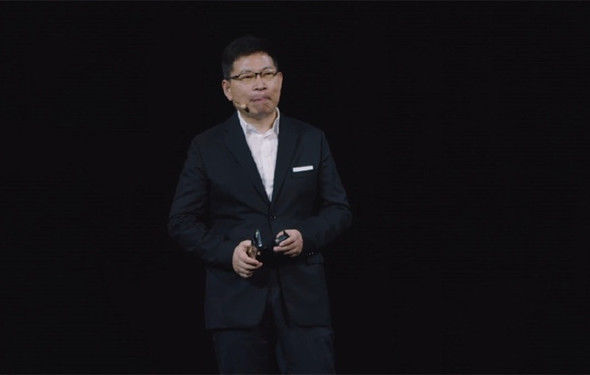男儿欲遂平生志,六经勤向窗前读。这篇文章主要讲述Android学习笔记-TextView(文本框)相关的知识,希望能为你提供帮助。
参考自文章:http://www.runoob.com/w3cnote/android-tutorial-textview.html
1.基础属性详解:
- id:为TextView设置一个组件id,根据id,我们可以在java代码中通过findViewById()的方法获取到该对象,然后进行相关属性的设置,又或者使用RelativeLayout时,参考组件用的也是id!
- layout_width:组件的宽度,一般写:**wrap_content**或者**match_parent(fill_parent)**,前者是控件显示的内容多大,控件就多大,而后者会填满该控件所在的父容器;当然也可以设置成特定的大小,比如我这里为了显示效果,设置成了200dp。
- layout_height:组件的宽度,内容同上。
- gravity:设置控件中内容的对齐方向,TextView中是文字,ImageView中是图片等等。
- text:设置显示的文本内容,一般我们是把字符串写到string.xml文件中,然后通过@String/xxx取得对应的字符串内容的,这里为了方便我直接就写到""里,不建议这样写!!!
- textColor:设置字体颜色,同上,通过colors.xml资源来引用,别直接这样写!
- textStyle:设置字体风格,三个可选值:**normal**(无效果),**bold**(加粗),**italic**(斜体)
- textSize:字体大小,单位一般是用sp!
- background:控件的背景颜色,可以理解为填充整个控件的颜色,可以是图片哦!
涉及到的几个属性:
- android:shadowColor:设置阴影颜色,需要与shadowRadius一起使用哦!
- android:shadowRadius:设置阴影的模糊程度,设为0.1就变成字体颜色了,建议使用3.0
- android:shadowDx:设置阴影在水平方向的偏移,就是水平方向阴影开始的横坐标位置
- android:shadowDy:设置阴影在竖直方向的偏移,就是竖直方向阴影开始的纵坐标位置
< TextView android:layout_width="wrap_content" android:layout_height="wrap_content" android:layout_centerInParent="true" android:shadowColor="#F9F900" android:shadowDx="10.0" android:shadowDy="10.0" android:shadowRadius="3.0" android:text="带阴影的TextView" android:textColor="#4A4AFF" android:textSize="30sp" />
2.2 带边框的TextView:
如果你想为TextView设置一个边框背景,普通矩形边框或者圆角边框!下面可能帮到你! 另外TextView是很多其他控件的父类,比如Button,也可以设置这样的边框! 实现原理很简单,自行编写一个ShapeDrawable的资源文件!然后TextView将blackgroung 设置为这个drawable资源即可!简单说下shapeDrawable资源文件的几个节点以及属性:
- < solid android:color = "xxx"> 这个是设置背景颜色的
- < stroke android:width = "xdp" android:color="xxx"> 这个是设置边框的粗细,以及边框颜色的
- < padding androidLbottom = "xdp"...> 这个是设置边距的
- < corners android:topLeftRadius="10px"...> 这个是设置圆角的
- < gradient> 这个是设置渐变色的,可选属性有: startColor:起始颜色 endColor:结束颜色 centerColor:中间颜色angle:方向角度,等于0时,从左到右,然后逆时针方向转,当angle = 90度时从下往上 type:设置渐变的类型
< ?xml version="1.0" encoding="utf-8"?> < shape xmlns:android="http://schemas.android.com/apk/res/android" > < !-- 设置一个黑色边框 --> < stroke android:width="2px" android:color="#000000"/> < !-- 渐变 --> < gradient android:angle="270" android:endColor="#C0C0C0" android:startColor="#FCD209" /> < !-- 设置一下边距,让空间大一点 --> < padding android:left="5dp" android:top="5dp" android:right="5dp" android:bottom="5dp"/> < /shape>
2.3 带图片(drawableXxx)的TextView:
基本用法:
设置图片的核心其实就是:drawableXxx; 可以设置四个方向的图片:drawableTop(上),drawableButtom(下),drawableLeft(左),drawableRight(右) 另外,你也可以使用drawablePadding来设置图片与文字间的间距!
效果图:(设置四个方向上的图片)

文章图片
实现代码:
< RelativeLayout xmlns:android="http://schemas.android.com/apk/res/android" xmlns:tools="http://schemas.android.com/tools" android:layout_width="match_parent" android:layout_height="match_parent" tools:context="com.jay.example.test.MainActivity" > < TextView android:layout_width="wrap_content" android:layout_height="wrap_content" android:layout_centerInParent="true" android:drawableTop="@drawable/show1" android:drawableLeft="@drawable/show1" android:drawableRight="@drawable/show1" android:drawableBottom="@drawable/show1" android:drawablePadding="10dp" android:text="张全蛋" /> < /RelativeLayout>
一些问题: 可能你会发现,我们这样设置的drawable并不能自行设置大小,在XML是无法直接设置的; 所以我们需要在Java代码中来进行一个修改!
示例代码如下:
package com.jay.example.test; import android.app.Activity; import android.graphics.drawable.Drawable; import android.os.Bundle; import android.widget.TextView; public class MainActivity extends Activity { private TextView txtZQD; @Override protected void onCreate(Bundle savedInstanceState) { super.onCreate(savedInstanceState); setContentView(R.layout.activity_main); txtZQD = (TextView) findViewById(R.id.txtZQD); Drawable[] drawable = txtZQD.getCompoundDrawables(); // 数组下表0~3,依次是:左上右下 drawable[1].setBounds(100, 0, 200, 200); txtZQD.setCompoundDrawables(drawable[0], drawable[1], drawable[2], drawable[3]); } }
运行效果图:

文章图片
【Android学习笔记-TextView(文本框)】
推荐阅读
- android 特殊符号开头的联系人归并至“#”下
- Android传感器应用_指南针(《第一行代码》教程)
- Android 智能问答机器人的实现
- jQuery基础(DOM篇,append(),after(),prepend(),insertAfter(),节点删除,遍历方法each())
- 安卓程序进入后台和前台的判断
- Android基础利用Intent在Activity之间传递数据
- 如何用Fiddler对Android应用进行抓包
- at android.view.LayoutInflater.createViewFromTag的错误原因
- Android 实现ActionBar定制










